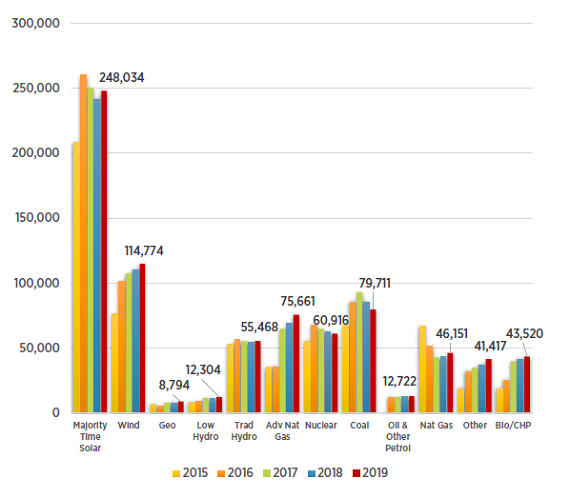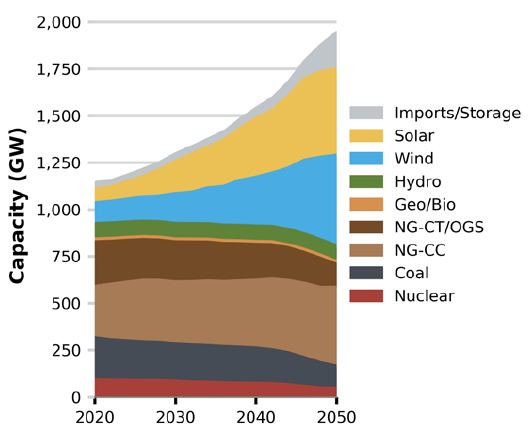The opportunity for the Institute is significant. Every country in the world, no matter their geographic size or GDP, is concerned and invested in the geopolitics, production, and delivery of Energy. The traditional and energy efficiency sectors employed approximately 6.8 million Americans or 4.6% of a workforce of approximately 149 million2 . Additionally, 120,300 jobs in the U.S. alone were added (over 7% of all new jobs nationwide). This data includes five traditional energy sectors: Fuels, Electric Power Generation, Transmission, Distribution, Storage, energy efficiency, and Motor Vehicles. Trillions are involved in Energy, yet there are few “Energy Administration”, or “Energy Management” majors, minors and professional development programs provided nationally..
Historically, employment in these five sectors of the economy has grown 12.4 percent from 2015-2019, outpacing the general economy’s employment growth rate (6.0 percent). The decoupling of energy consumption from job growth and the deployment of new technologies in all five sectors are two key drivers and important trends. It should be noted that energy efficiency has also been a significant contributor of job growth. In the Electric Power Generation sector, job losses in nuclear and coal generation were offset by increase in natural gas, solar, wind, CHP, hydro, and geothermal.
The figures below highlight the transition in generation sources that have occurred since 2015 and that are projected to continue thru 2050. This transition has been and will also continue to be reflected in the employment shifts within the sectors.
* Geo – Geothermal; Bio – Biomass; NG-CT – Natural Gas-Combustion Turbine; OGS – Oil, Gas & Steam; NG-CC – Natural Gas-Combined Cycle
The 2020 U.S. Energy & Employment Report also provided the results of a comprehensive employment survey they conducted with 25,000 business representatives across the US and across the five sectors. These results highlighted the hiring difficulty in all sectors as a growing problem. Specifically, just over 84 percent of employers surveyed reported difficulty hiring qualified workers over the last 12 months with a difficulty range of somewhat difficult to very difficult. Lack of experience, training, or technical skills were again cited as the top reasons. The need for technical training and certifications was also frequently cited, implying the need for expanded investments in workforce training and closer coordination between employers and the workforce training system.
As noted, a gap that exists for professionals whether they are working in:
- Mining and Extraction
- Manufacturing
- Wholesale Trade, Distribution, and Transport, or
- Professional and Business Services.
This report speaks to the gap the Institute seeks to fill to educate professionals on the nuts and bolts of energy production, transmission, delivery, and electric grid management.



